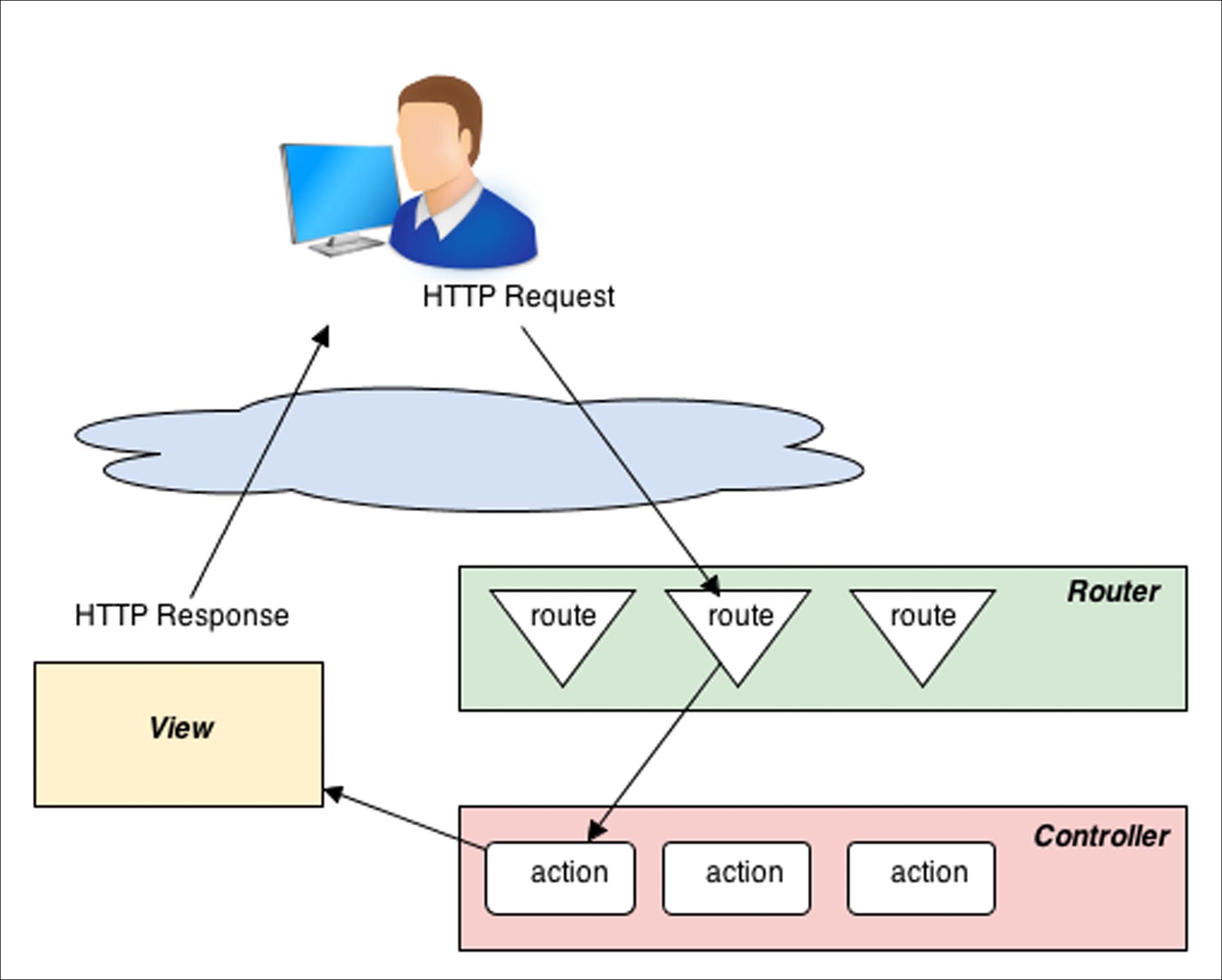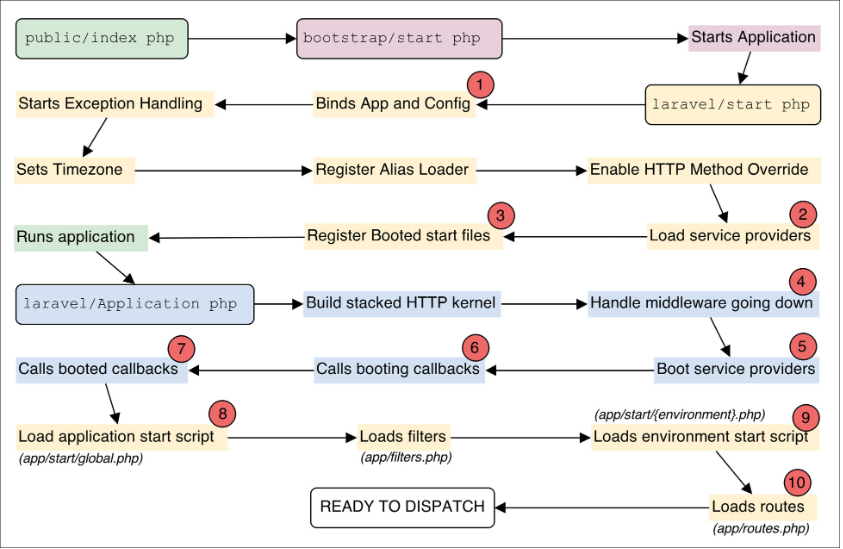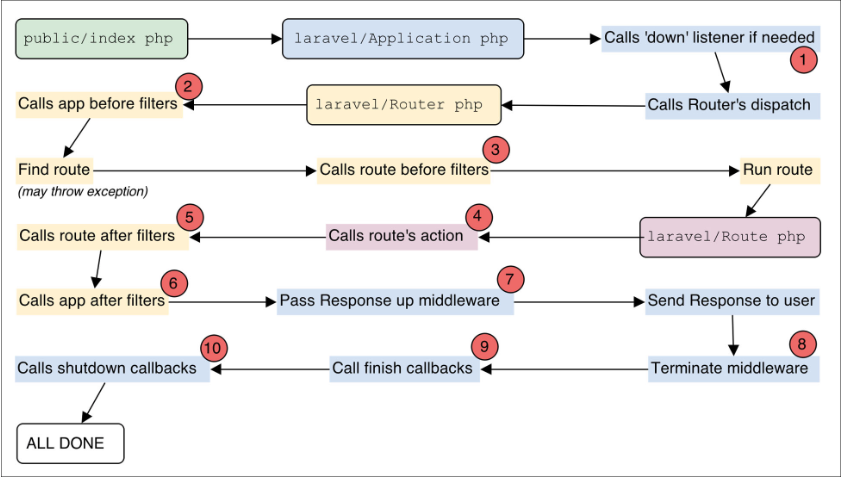Learn about Request Lifecycle
Surely you've heard or used PHP Framework as Laravel, right? So what happens when there is a request to a URL defined in the application route? How does the Framework work? This article will help you understand more about this Framework.

What is the standard Lifecycle?
- An HTTP Request routes to a Controller
- Controller implements specific actions and transfers data to View
- View format data appropriately. Provides HTTP Response
There are many exceptions and variances with flow on, but this gives you three basic places to start:
- Routing in app / route.php
- Controller in app / controllers /
- View in app / views /
Some of the above exceptions are:
- The route returns Views or Response directly, ignoring the use of Controller
- Filters (in app / filters.php ) may appear before or after the route
- Error and exception handling
- Feedback Events
A deep understanding of Request Lifecycle shows some places where we can write code. The entire Lifecycle of a request can be divided into 3 parts: Loading, Booting and Running.
Part 1: Loading

There are 3 main sections where you can influence your Loading step in Request Lifecycle.
- Workbench: allows you to develop and debug packages next to your application
- Environment Detections: you should modify bootstrap / start.php and add identification for your application
- Paths: You can modify bootstrap / paths.php to customize your settings. For example, change the Storage folder.
Part 2: Booting

There are 10 different areas that your application can impact on Request Lifecycle.
- Configuration
The configuration of your application affects both Laravel's boot and operation process. - Service Providers
Any Service Providers that you create or link to the application are loaded early in the booting process. If your service provider is not delayed, the register () method will be called at this time - Đang đăng nhập start file
Your 3 application startup files (# 8, # 9, # 10 below) are registered to start when the application startup event occurs. - Handle middleware going down
Middleware works similarly to Russian nested dolls. That is, the application will launch through each of the different level classes in turn according to each level. Up to down. - Booting service providers
Now the boot () method on any service providers without delay will be called - Booting callbacks
Any callbacks declared in App :: booting () will be called - Booted callbacks
At this point our application has been started. Any callbacks declared in App :: booted () will be called. It includes all the callbacks loaded in the 3 files in step 3 above. - Your application start script is called
That is the file app / start / globals.php . This file contains the initializations you want the application to always execute before processing any requests. Laravel provides reasonable defaults for Logging, Exception, Maintenance mode. You can edit this file and put any processing you need to do in it, but make sure you keep app / filters.php . - app / start / {environment} .php
If you need the initialization code to only execute in a certain environment, you can put it in this file - app / routes.php
Route your application. This is one of the most popular files that you will edit when setting up the application.

Part 3: Step Running

There are 10 different areas that your application can impact on Request Lifecycle.
- Maintenance Mode
If you have a maintenance mode listener and your application is in maintenance status then that listener will be executed. - App "before" filters
If there is any before filter registered with App :: before () , it will be called. - Route / Controller "before" filters
If any before filters are set at the route or controller level, it will be called - Hành động
This is where a controller method or route callback is called to handle the request. - Route / Controller "after" filters
If there are any after filters placed at the route or controller level, it will be called - App "after" filters
If there is any after filter registered with App :: after () , it will be called. - Middleware response handling
This is where the middleware stacks are done. Any piece of the middleware will be released and modify the response before they are returned - Middleware shutdown
If you provide any middleware deployed in TerminableInterface , it will call the shutdown () method. - Finish callbacks
If there are any callbacks registered with App :: finish () , it will be called. - Shutdown callbacks
Finally, if there are any callbacks registered with App :: shutdown () , it will be called.
Through this article, I hope to give you more knowledge about Request Lifecycle in Laravel application.
